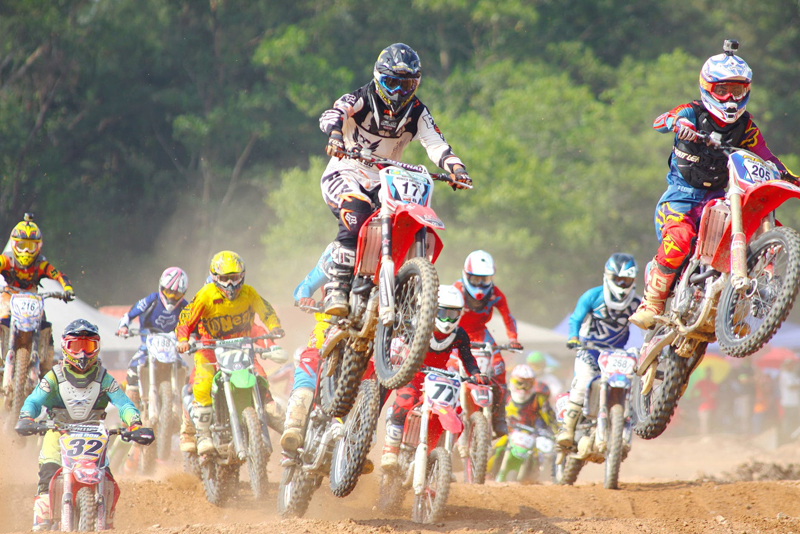The Movable Rear Wing

Among the many changes for the 2011 season, the movable rear wing has become one of the most controversial. Praised and pilloried alike by teams and drivers, the purpose behind the use of a movable wing is to aid in overtaking, a popular topic of discussion and development in Formula 1.
A Formula 1 car creates so much acceleration in all directions that, when driven on older, more narrow tracks, the wide-body design makes passing almost impossible. Additionally, huge zones of turbulence are created behind the car due to the downforce from the large rear wing effectively gluing the car to the track. This turbulence causes drag and slows the car, as well as unsettles cars coming from up from behind. During the 2010 season, F1 cars were equipped with a movable front wing designed to help settle the car when caught in the wake of another, but the drivers rarely employed the system due to lack of effectiveness.
For 2011, the movable rear wing will essentially act as a replacement for the now-banned F-duct by reducing drag and increasing straight-line speed. A driver pushes a button on the steering wheel to increase the gap between the two main planes of the wing, lowering drag and providing a 15 km/hr speed boost. The wing will remain in the low-drag position until the driver applies the brakes or passes the next timing loop, part of the system used to track speed, at which time the wing moves to default position. The limitations set forth by the FIA allow unrestricted use of the system during practice and qualifying, but once the race begins, the system can only be employed at certain pre-determined parts on the track, and when the driver is one-second or less behind another.
Proponents say the movable wing will certainly increase overtaking by giving an equally skilled driver in a slower car an opportunity to overtake a faster car, particularly when used in conjunction with KERS. Concern about the safety of the system seems minimal, as well as any potential distraction to the driver.
Those opposing the idea of a movable wing are concerned it will cause distraction to the driver, having yet another adjustment to operate, and it will make overtaking too easy. Safety is also a concern when the possible loss of a rear wing means loss of vehicle control. Most immediate is the worry it will cheapen the sport by creating false advantages just to add to the 'show'.
Fans of Formula 1 racing understand the importance of skill in operating such an amazing vehicle, and that strategy plays a vital role in a driver's success on the track. Sure, spectators want more than the parade many races have become after the first couple of laps, but choosing artificial advantage over driver skill appears too gimmicky, and belongs in a video game, not in Formula 1.
A Formula 1 car creates so much acceleration in all directions that, when driven on older, more narrow tracks, the wide-body design makes passing almost impossible. Additionally, huge zones of turbulence are created behind the car due to the downforce from the large rear wing effectively gluing the car to the track. This turbulence causes drag and slows the car, as well as unsettles cars coming from up from behind. During the 2010 season, F1 cars were equipped with a movable front wing designed to help settle the car when caught in the wake of another, but the drivers rarely employed the system due to lack of effectiveness.
For 2011, the movable rear wing will essentially act as a replacement for the now-banned F-duct by reducing drag and increasing straight-line speed. A driver pushes a button on the steering wheel to increase the gap between the two main planes of the wing, lowering drag and providing a 15 km/hr speed boost. The wing will remain in the low-drag position until the driver applies the brakes or passes the next timing loop, part of the system used to track speed, at which time the wing moves to default position. The limitations set forth by the FIA allow unrestricted use of the system during practice and qualifying, but once the race begins, the system can only be employed at certain pre-determined parts on the track, and when the driver is one-second or less behind another.
Proponents say the movable wing will certainly increase overtaking by giving an equally skilled driver in a slower car an opportunity to overtake a faster car, particularly when used in conjunction with KERS. Concern about the safety of the system seems minimal, as well as any potential distraction to the driver.
Those opposing the idea of a movable wing are concerned it will cause distraction to the driver, having yet another adjustment to operate, and it will make overtaking too easy. Safety is also a concern when the possible loss of a rear wing means loss of vehicle control. Most immediate is the worry it will cheapen the sport by creating false advantages just to add to the 'show'.
Fans of Formula 1 racing understand the importance of skill in operating such an amazing vehicle, and that strategy plays a vital role in a driver's success on the track. Sure, spectators want more than the parade many races have become after the first couple of laps, but choosing artificial advantage over driver skill appears too gimmicky, and belongs in a video game, not in Formula 1.
This site needs an editor - click to learn more!
You Should Also Read:
Teams Change Minds on KERS
Rear Diffusers Declared Legal
KERS Makes a Comeback
Related Articles
Editor's Picks Articles
Top Ten Articles
Previous Features
Site Map
Content copyright © 2023 by Katie Schwausch. All rights reserved.
This content was written by Katie Schwausch. If you wish to use this content in any manner, you need written permission. Contact
BellaOnline Administration
for details.


